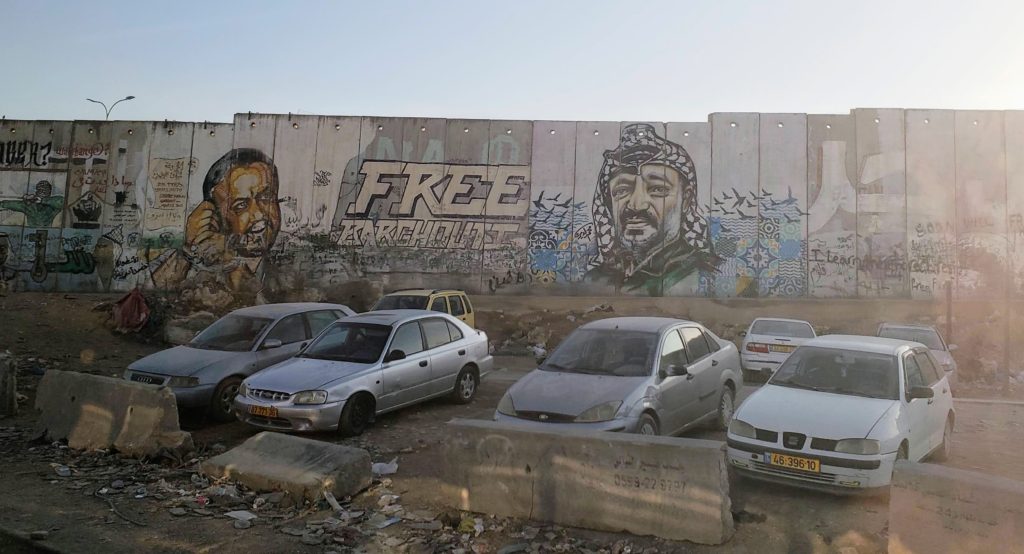Ramallah, just 10km north of Jerusalem, has become Palestine’s de-facto capital, home to the Palestinian parliament, government ministries and the offices of the President and Prime Minister. Closely associated for me with the Intifada and Palestinian resistance, Ramallah is today the most affluent and liberal city in Palestine and the cultural hub of the West Bank, with many famous Palestinian activists, poets, musicians and artists residing here.
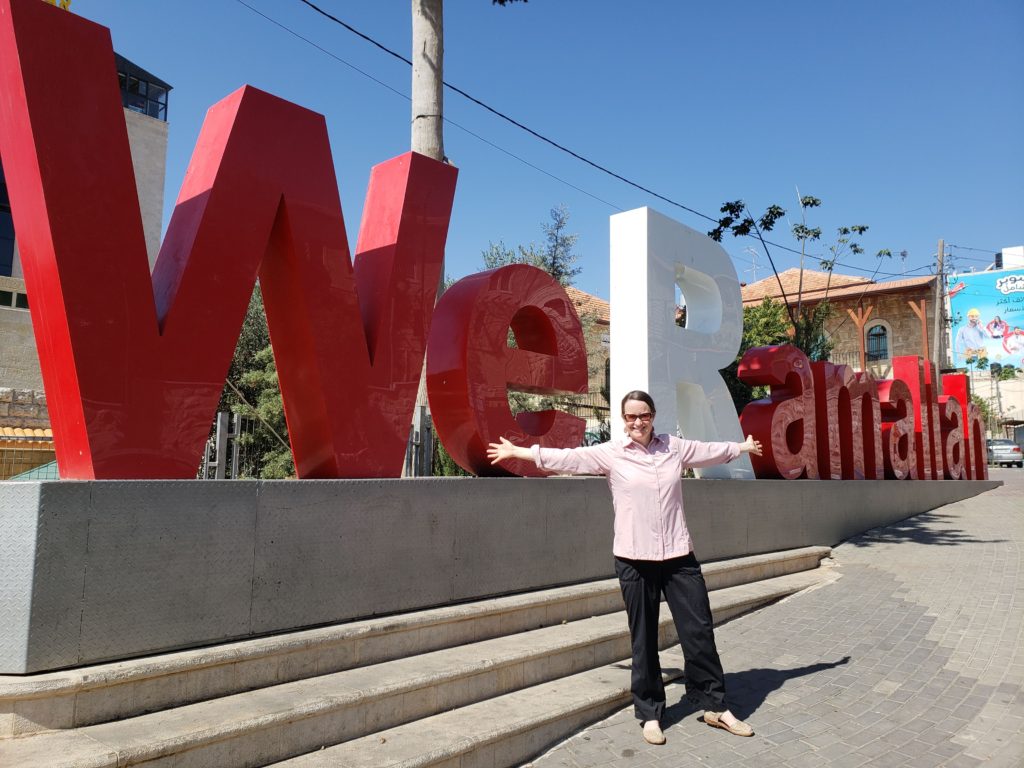
We took a Palestinian bus from Jerusalem for the short trip, without much of a plan of what to see here. We mostly just wanted to be in Palestine. From the bus we wandered around, heading past a large mosque to a local fruit and vege market. Lots of freshly harvested green olives and dates available.
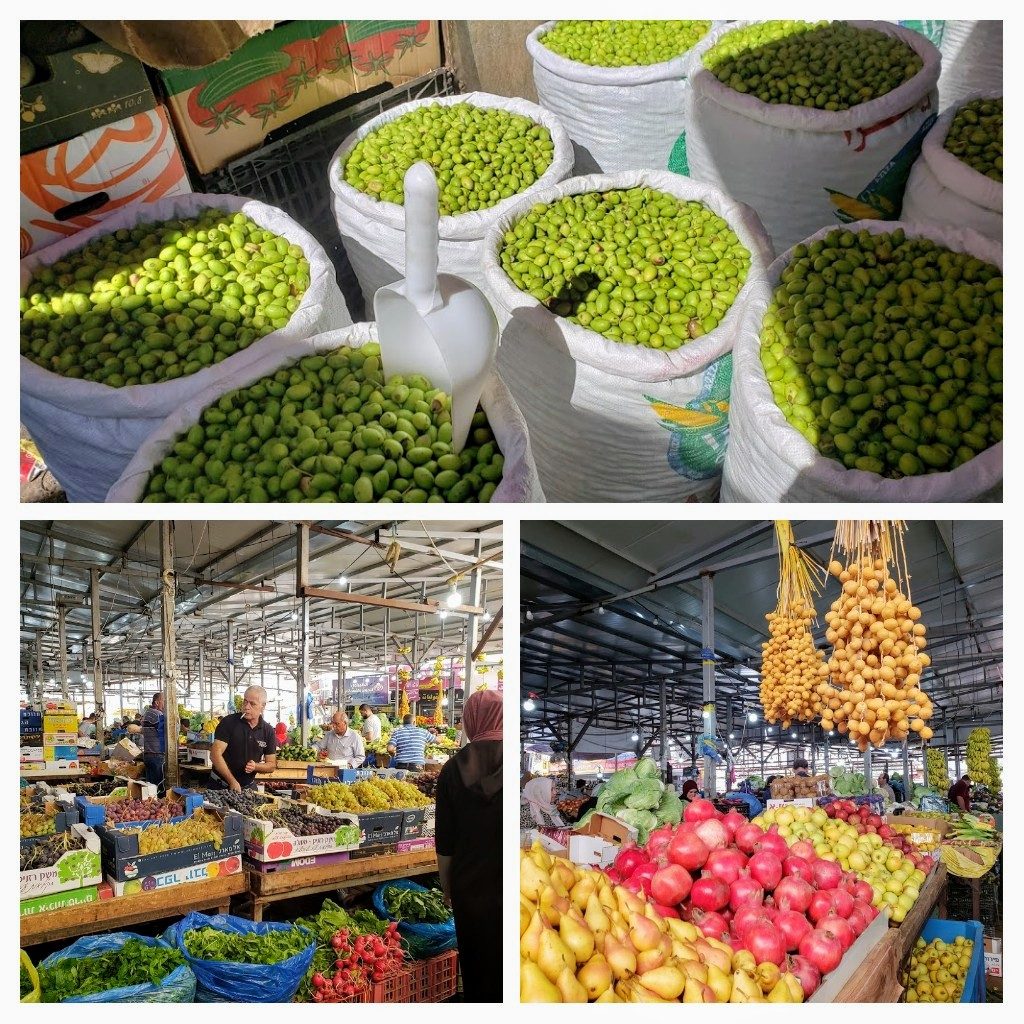
As we walked around Ramallah, I was fascinated by the mix of very trendy young people and the more conservative, covered up residents. Not many adopting our casual kiwi style! Wherever we went people seemed genuinely friendly and kept saying ‘Welcome’. Near the market I was interested to see a guy busy at work toasting seeds and nuts in turning drums.
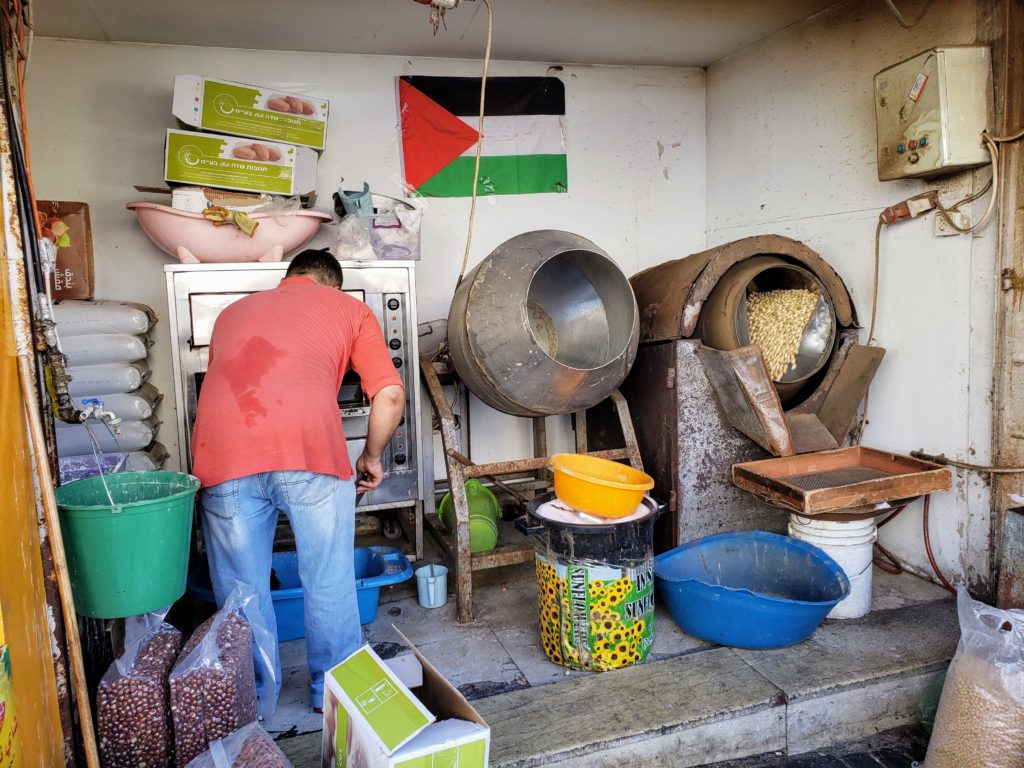
When we got to our first roundabout – right in the heart of the city it was funny to see going round the the roundabout, among the traffic, a guy on foot pushing his cart of wares and also pedestrians walking right into the roundabout. No-one seemed too bothered at the hold up this caused to the traffic. This was Al Manara Square – with lion statues in the middle, representing the founding families of the city. It is apparently one of Palestine’s most renowned public spaces.
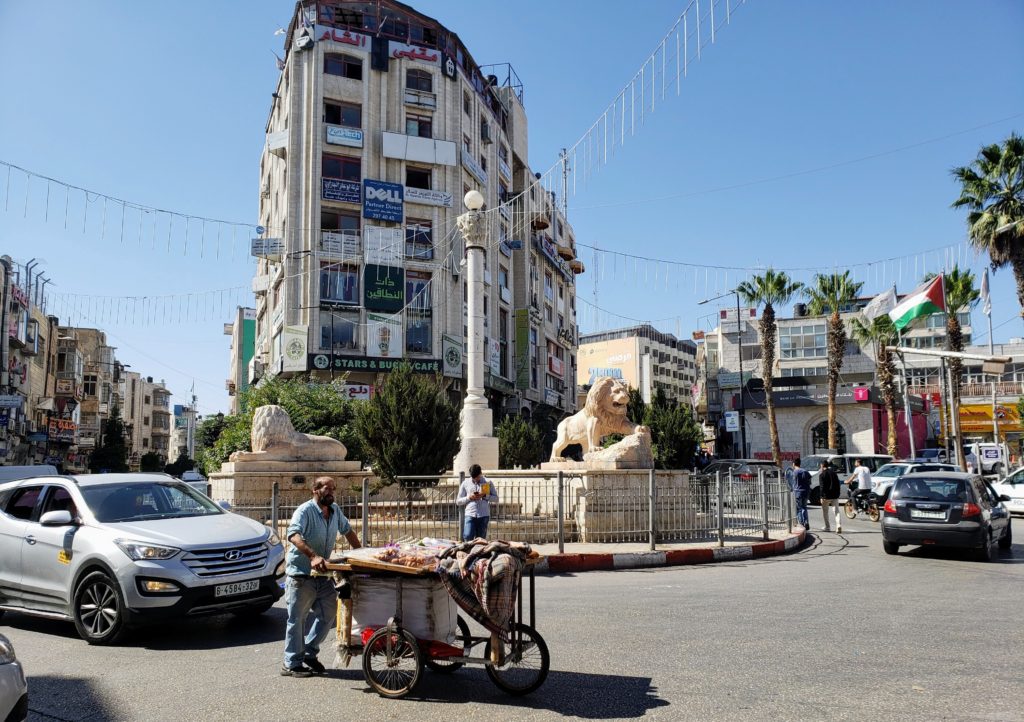
The next roundabout/ square we came to was redesigned and renamed Yasser Arafat Square in 2010. It has a very tall structure in the centre of the roundabout, symbolising a lighthouse, which stands in water. Near the top of this tower is a young lad holding the Palestinian flag, which intends to remind people of Arafat’s statement; ‘A day will come when one of our boys or girls will raise the flag of Palestine over the walls of Jeruslem, the minarets of Jerusalem and the churches of Jerusalem.’
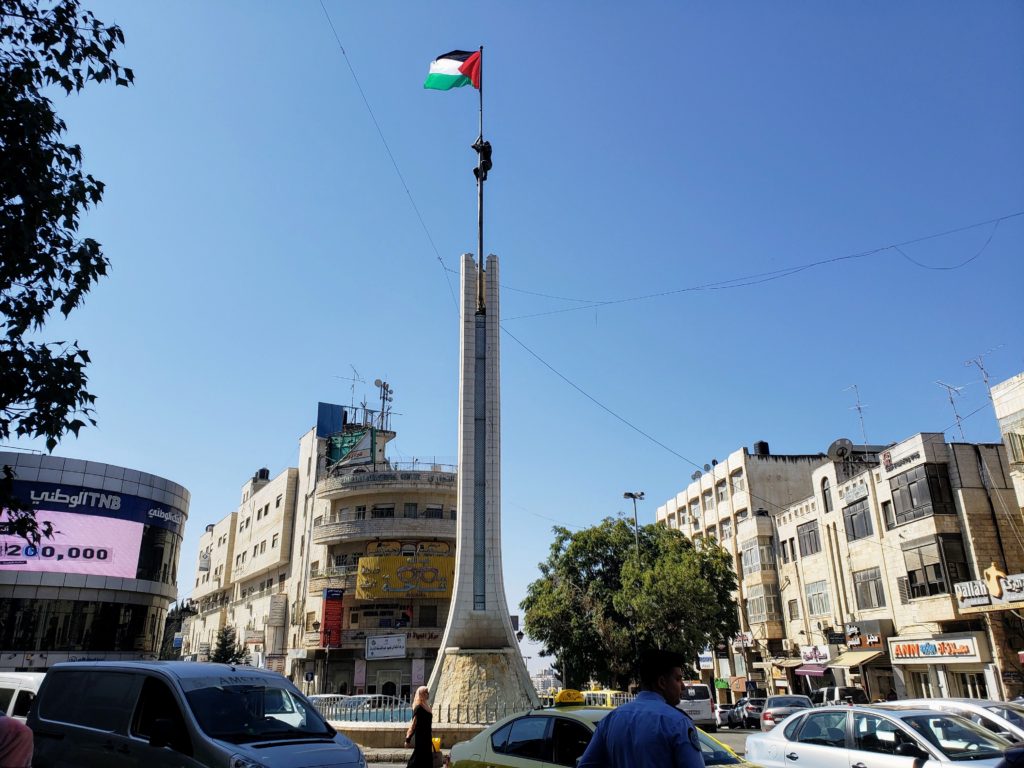
Ramallah was historically an Arab Christian town. It started out as an agricultural village, growing dramatically in the 17th and 18th centuries with many (predominantly Christian) people moving there from around the region. The main denomination of the time was the Eastern Greek Orthodox Church and there is still an orthodox church here today (from the 1850s) which we visited.
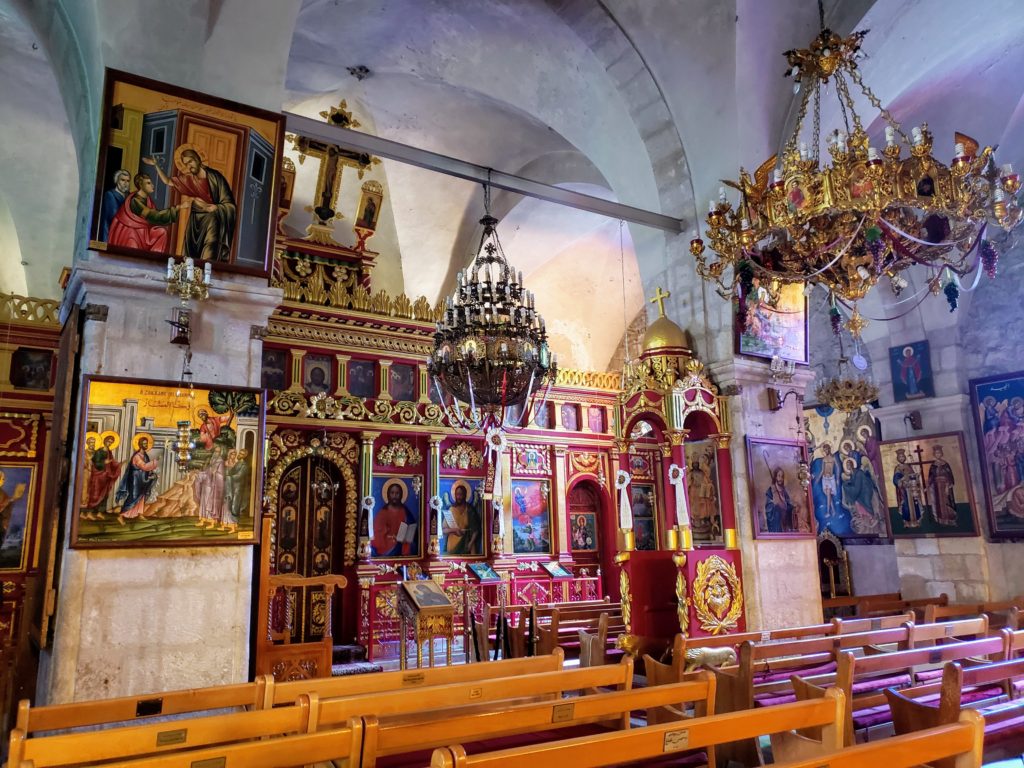
During the 1850s the Catholic church also established a church and a girls school as well as a co-ed high school in Ramallah. These schools are still running today and although we didn’t see them, we did walk past the Quaker ‘Ramallah Friends Schools.’ The girls school was established in 1869 and became a boarding school in 1889, the boys school was founded in 1901, used as a hospital during WW1 and opened in 1918. These are private schools today and offer the International Baccalaureate (IB) Primary Years programme just as Ashburton Borough School does, where I work in NZ!
During the 20th century many Muslim villagers moved to prosperous Ramallah from elsewhere in Palestine. Meanwhile during the second half of the century many of its Christian residents emigrated, to the USA in particular. This has resulted in changing demographics, with Ramallah’s current population of 60,000 being majority Muslim, with a sizeable Christian minority.
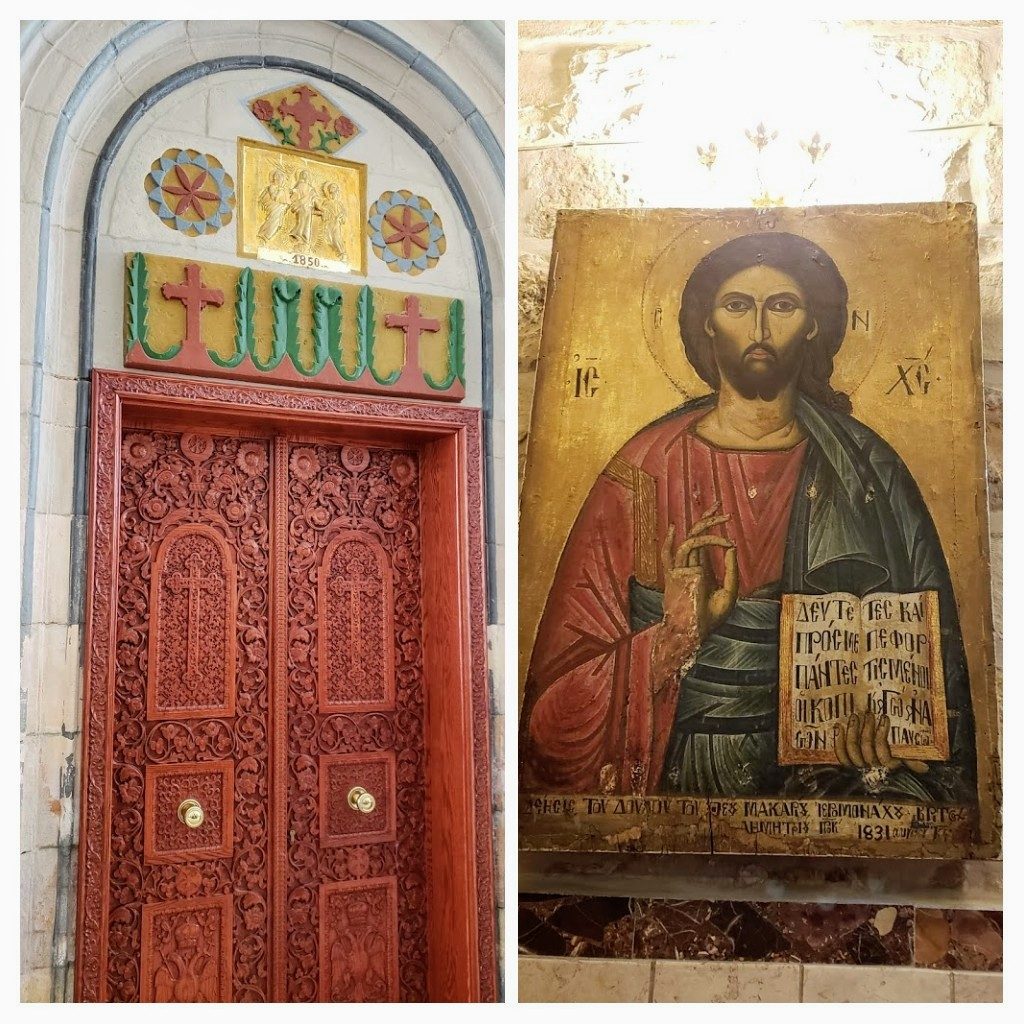
Ramallah after 1948, some history…
After the creation of the State of Israel in 1948 and ensuing war, Ramallah was part of the Jordan-ruled West Bank. Residents enjoyed relative peace, freedom of movement in the West Bank, Jordan, Lebanon and Syria and had the ability to gain Jordanian citizenship. Many of those belonging to Palestinian pro-independence, socialist or communist groups were imprisoned however.
During the Six Day War in 1967, Israel captured Ramallah from Jordan. They imposed a military closure and conducted a census a few weeks later with everyone registered in the census given an Israeli identity card. This allowed them to continue to reside there and be able to freely visit Israel and the Gaza Strip (for the first time in 19 years). Anyone abroad at the time of the census lost their residency rights though! There was no citizenship on offer to the residents, only work permits to work in Israel.
For decades, Ramallah was under Israeli military control and Israeli civil administration. Residents who opposed the occupation, expansion of Jewish settlements or the theft of Palestinian land (e.g. olive groves that Arab villagers had tended for generations) were jailed or deported. Tensions rose over Israeli control and in 1987 the first popular uprising known as the Intifada erupted in the West Bank and Gaza strip with Ramallah residents among those first involved. The intifada meant resistance and civil disobedience; daily protests, strikes, boycotts, not turning up to work in Israel etc.
The aims of the intifada were: to end curfews and checkpoints, Israel withdrawal from territories they seized in 1967 and an establishment of a Palestinian State. Leaflets appealed to people to be involved in civil disobedience and resistance, not to take up arms. The Israeli Defense Force (IDF) responded to the resistance with tear gas, water cannons, rubber bullets and live ammunition.
Israel’s harsh response to the civil disobedience meant protests rapidly spread and there was mass participation across the West Bank and Gaza, including a huge number of women and children involved in the action. It also resulted in more agressive action, like stones and molotov cocktails thrown against Israeli patrols in the city, and military vehicles, Israeli buses and banks becoming targets. Youths burned tires, garbage and set up stone barricades. Schools and universities were shut down, house arrests and curfews became common.
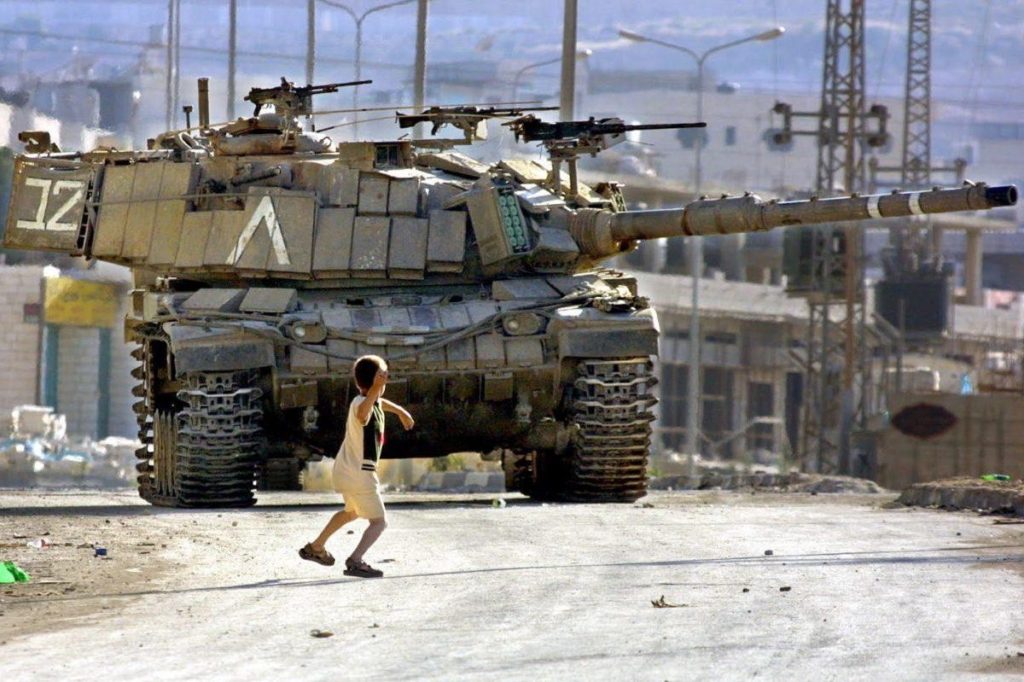
Over the 6 years of the intifada 100 Israeli civilians, 60 Israeli soldiers and approximately 1200 Palestinians were killed. In the first 2 years alone, more than 25,000 Palestinian children required medical treatment from IDF beatings.
The intifada wound down as the peace process moved forward with the Madrid International Peace Conference in 1991 and then the 1993 Oslo Accords. After the Israeli PM Yitzhak Rabin and Palestinian leader Yasser Arafat famously shook hands at the White House in September 1993, school children in Ramallah handed out olive branches to Israeli soldiers patrolling the streets and normal life in Ramallah resumed.
In keeping with the Oslo Accords, the Israeli army withdrew to the city outskirts in December 1995 and the newly established Palestinian Authority assumed civic and security responsibility for the city. Ramallah prospered after this time with many expats returning to establish businesses there. But in 2000 unemployment started to rise and the economy declined. Freedom of movement as known before the first initifada was never restored and Israel continued to confiscate land for its increasing number of settlements around Ramallah.
In September 2000 the second Intifada broke out with young Ramallah residents demonstrating daily against the Israeli army. Initial marches to checkpoints were replaced by sporadic use of live ammunition against Israeli soldiers and attacks on Israeli settlers. This resulted in army checkpoints established to restrict movement in and out of Ramallah. In 2002 the army imposed curfews, electricity cuts, school closures and disruptions to commercial life. Social and economic conditions deteriorated and many left the city as living conditions became intolerable. Construction of the West Bank barrier added to Ramallah’s isolation.
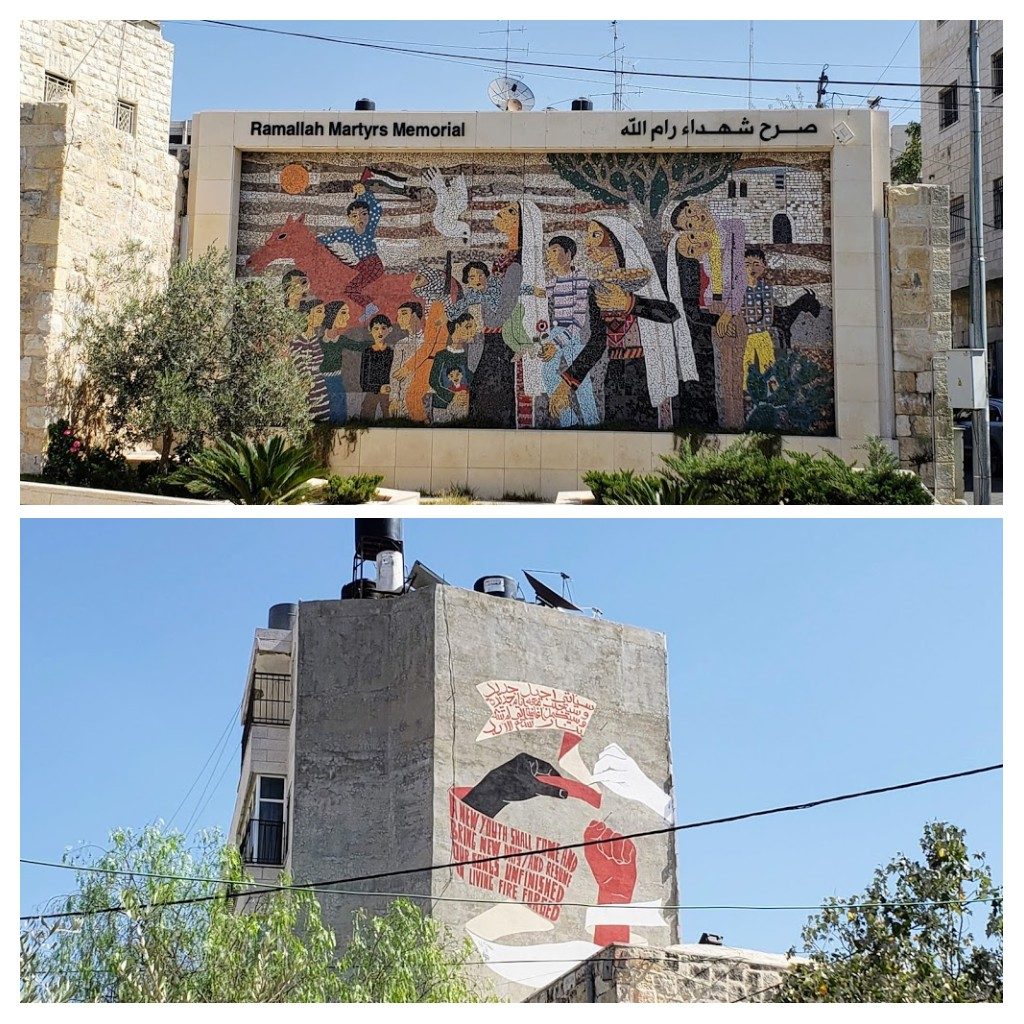
Since the end of the Second Intifida in February 2005, millions of dollars of aid has flooded into the city, greatly boosting its economy. Today Ramallah serves as the headquarters for most international NGOs and embassies and is experiencing a construction boom thanks to relative stability and Western donor support.
So back to our visit…
We wandered past the trendy (and expensive looking) western cafes where the cool kids and expats hang out and found something more local for a bite to eat and a drink. We ordered the pommegranate juice with ginger and oh my word that was amazing! We saw fresh pommegranate juice everywhere in Israel but it was always served in plastic takeaway cups so we hadn’t tried it. This one paired with fresh ginger was just divine. We shared hummus and a turkish salad (spicy tomato) which came with pita bread and pickles. We thought this would be a snack but ended up being lunch as it was surprisingly filling. We still had room to try a few of the Arabic sweets after though.
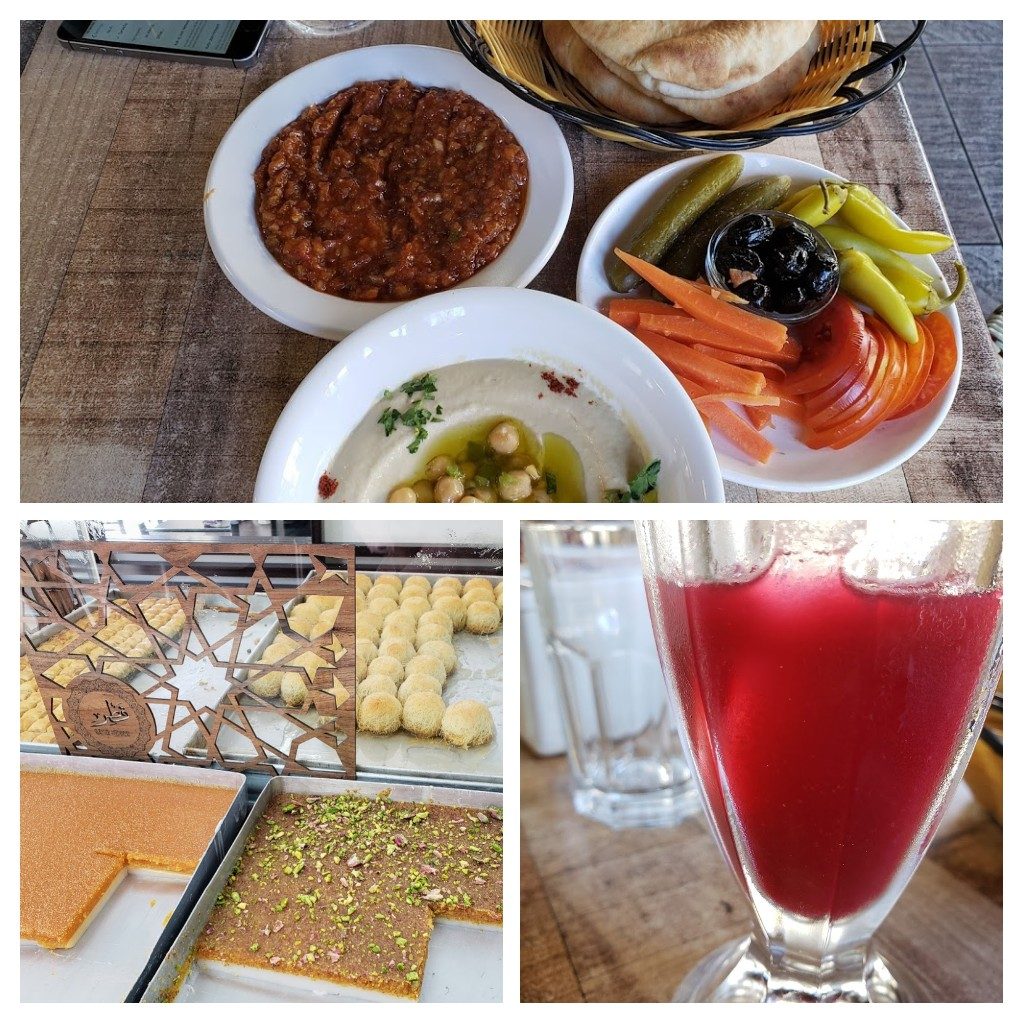
On our walk to Yasser Arafat’s tomb and museum we spotted guys in barber shops getting facials and others who were very well manicured. Lots of pedestrians, flash cars and donkeys carrying carts of cauliflowers filled the streets. It was such a mix of old and modern, trendy, liberal and conservative.
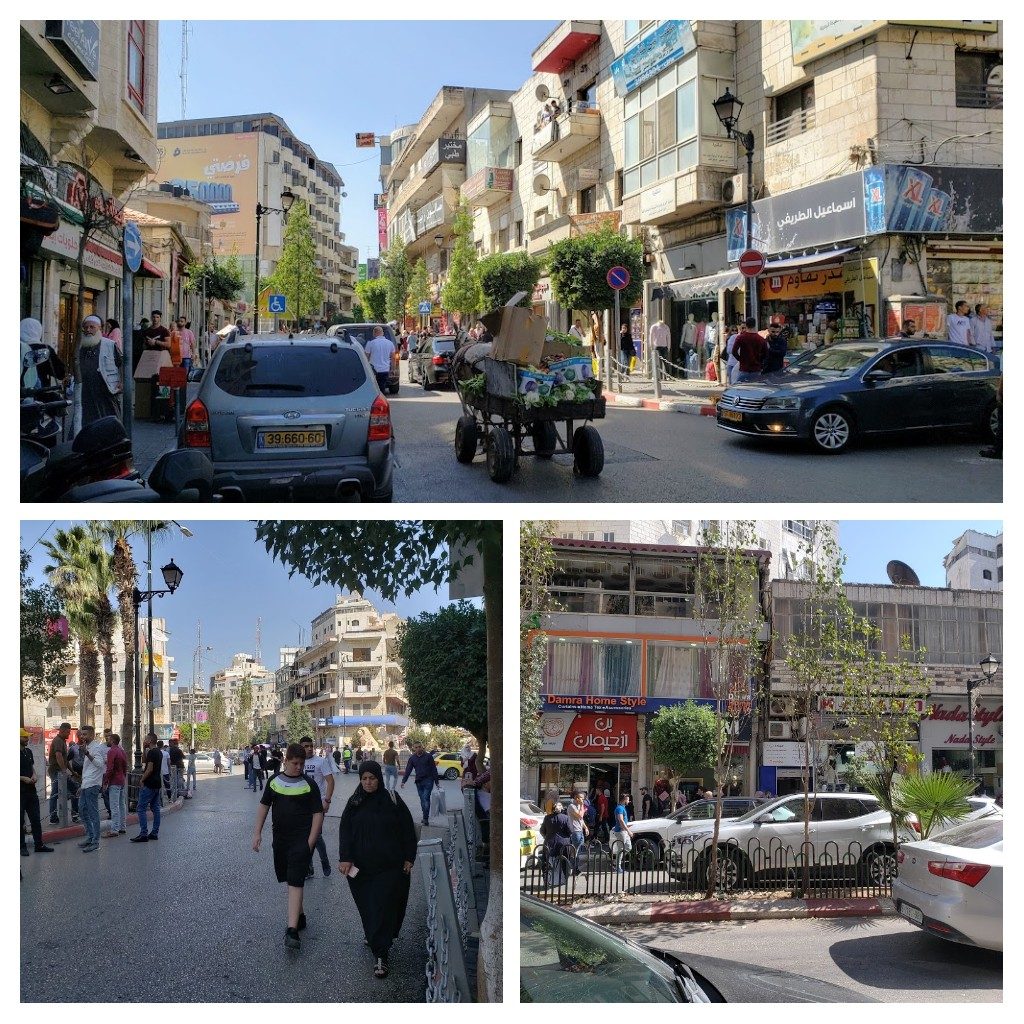
Yasser Arafat’s tomb and museum is really the only tourist attraction as such in Ramallah. In the well laid- out spacious modern complex first we came across 2 soldiers guarding Arafat’s tomb. This is a ‘temporary’ solution, as it states on his tomb that when/ if Jerusalem comes under Palestinian control, he is to be buried there. After a photo and a quick chat with the guards, we headed inside to the museum and art gallery.
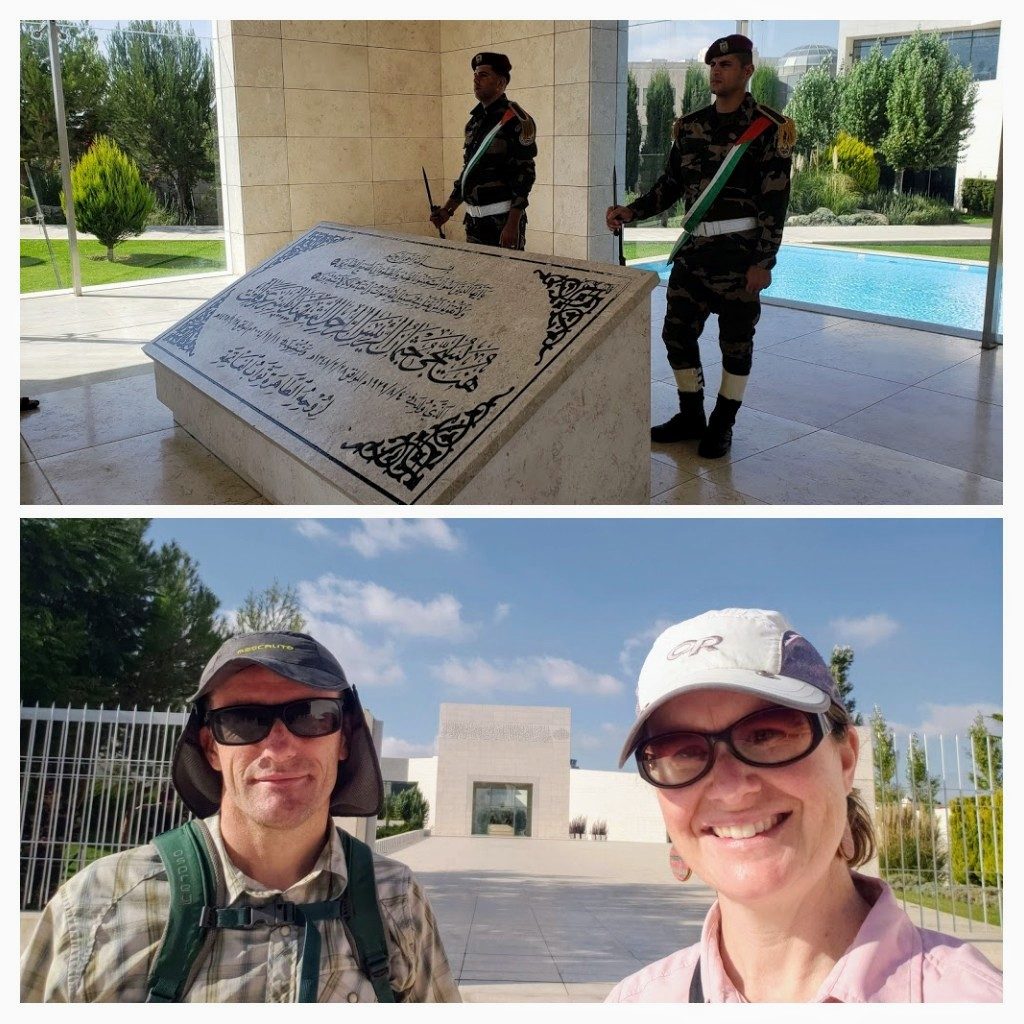
Near the entrance is a large mural of Yasser Arafat and many Arab personalities who have had a significant impact on the journey of the Palestinian people.
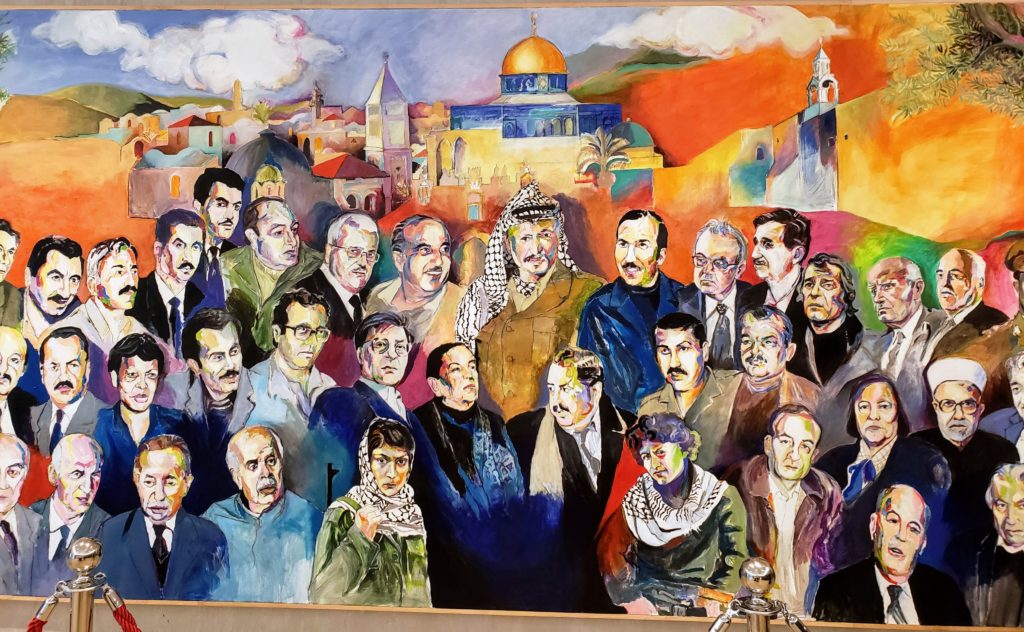
The Yasser Arafat museum provided a clear account of the history of Palestine in the 20th century, illustrated with various British and UN letters, policies and papers, maps, statistics and photos. Although I was once familiar with this history (from politics papers at university) it was good to have a refresher. Throughout the museum there was also poetry by Palestinians, translated into English.
Had you contemplated
The victim's face and reflected,
You would have remembered
Your mother in the gas chamber.
You would have freed yourself
From the power of the rifle - Mahmoud Darwish
Reading about Churchill’s White Paper (1922) clarifying the British interpretation of a Jewish National Home, I was left thinking, if only! In the paper Churchill claimed there was no intention to provide ‘for the disappearance or the subordination of the Arabic population, language or culture in Palestine’. If only! It states that ‘the status of all citizens of Palestine in the eye of the law shall be Palestinian, and it has never been intended that they, or any section of them, should possess any other juridicial status’. If only!
The British White Paper of 1939 clarifes the British position on the Jewish state, once it hits 450,000: ‘conditional independence of a Palestinian State within 10 years’ (if only!), restricting Jewish immigration and ‘protecting Palestinian property rights from Zionist acquistion’ (if only!). Then there’s the UN Partition Plan of 1947 which the Arab states rejected… if only they hadn’t… how things might have turned out differently for the Palestinians.
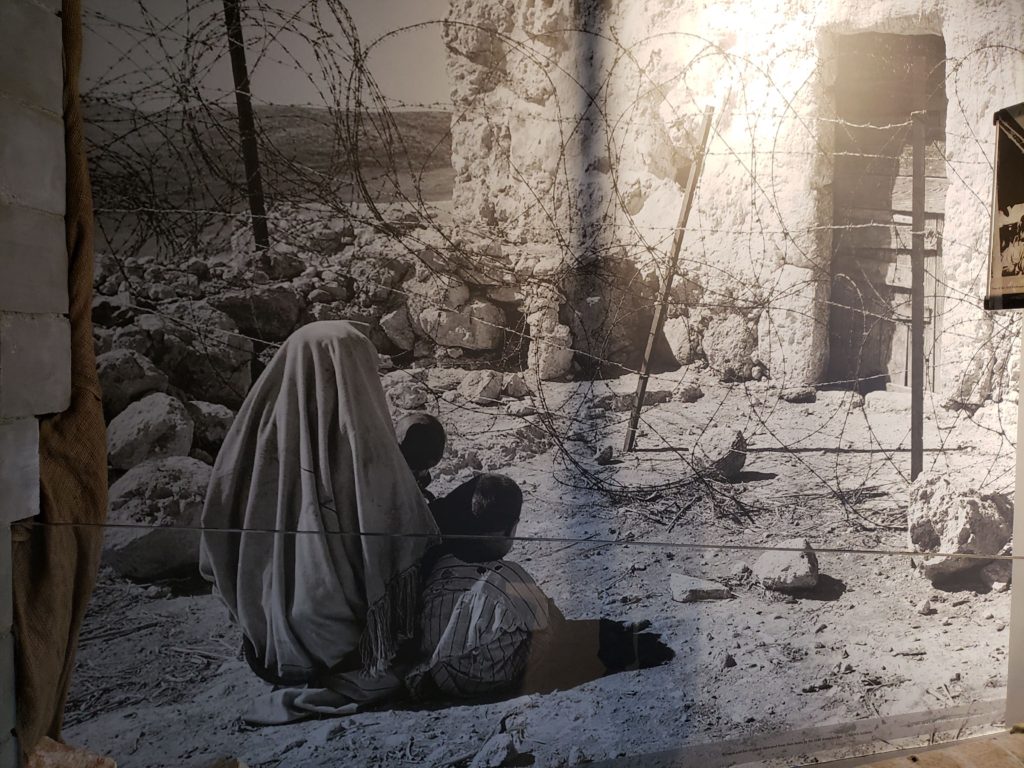
Some rose coloured glasses were worn by those creating the detail about Arafat’s life (not surprising given the context of where this museum was), but otherwise the big picture historical stuff told the gloomy tale of the Palestinian plight pretty fairly. The use of poetry throughout gave a more personal insight into Palestinian feeling.
Oh Palestine,
You are so precious, so beautiful and so pure.
The more I fight for your sake
The more I fall in love with you.
Which soil other than this soil
Is made of musk and amber?
Which horizon in this world
Is as fragrant as your horizon?
The more I defend your land
The greener life becomes. - Abu Salma
Yasser Arafat was a prominent leader for almost 50 years, starting in the 1950s when he co-founded Fatah, a paramilitary organisation seeking the disestablishment of Israel and its replacement with a Palestinian state. During the 1980s he changed his approach from open conflict with Israel to negotiation. In 1988 he acknowledged Israel’s right to exist and sought a two state solution to the Israeli-Palestinian conflict. He received the Nobel Peace prize in 1994 after the Oslo negotiations. He was chairman of the Palestinian Liberation Organisation (PLO) from 1969 until 2004 and chairman of the Palestinian (National) Authority when it was established in 1994, then elected President in 1996, a position held until his death in 2004.
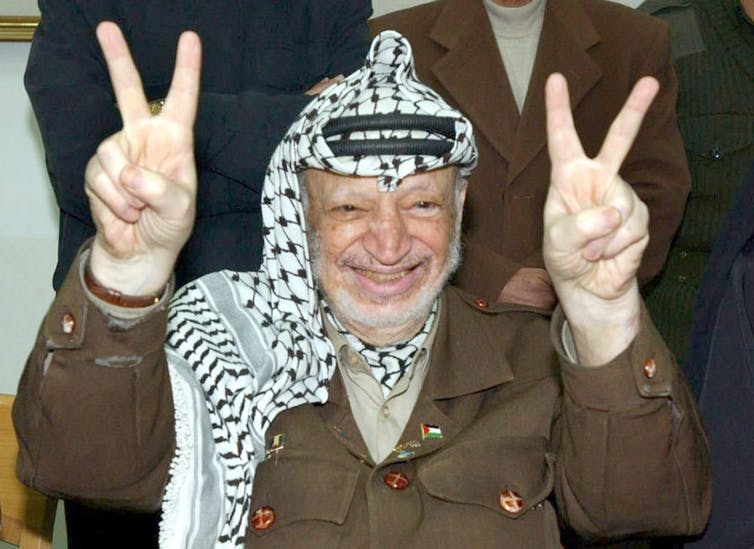
After the failed Camp David talks and the ensuing second intifada, the Israeli Defence Force used tanks, bulldozers and armoured vehicles to destroy various offices, the prison, the main interior building etc. of the Palestinian Authority in Ramallah. They left just the part of the compound where Arafat and his people were. The siege (decried by the UN Security Council) meant Arafat couldn’t leave for several years, so he was confined here until his medical evacuation to France just weeks before he died in November 2004. We got to look around this compound after seeing all the info panels in the museum.
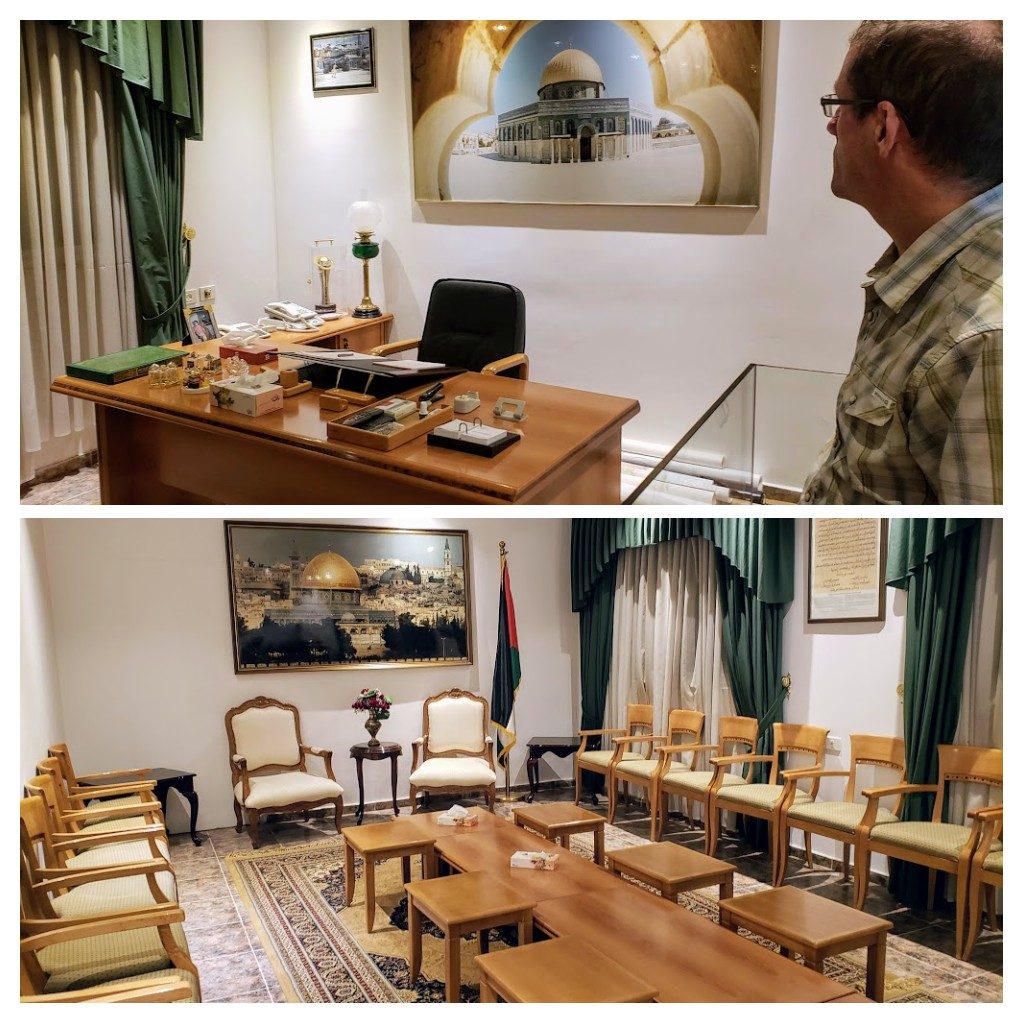
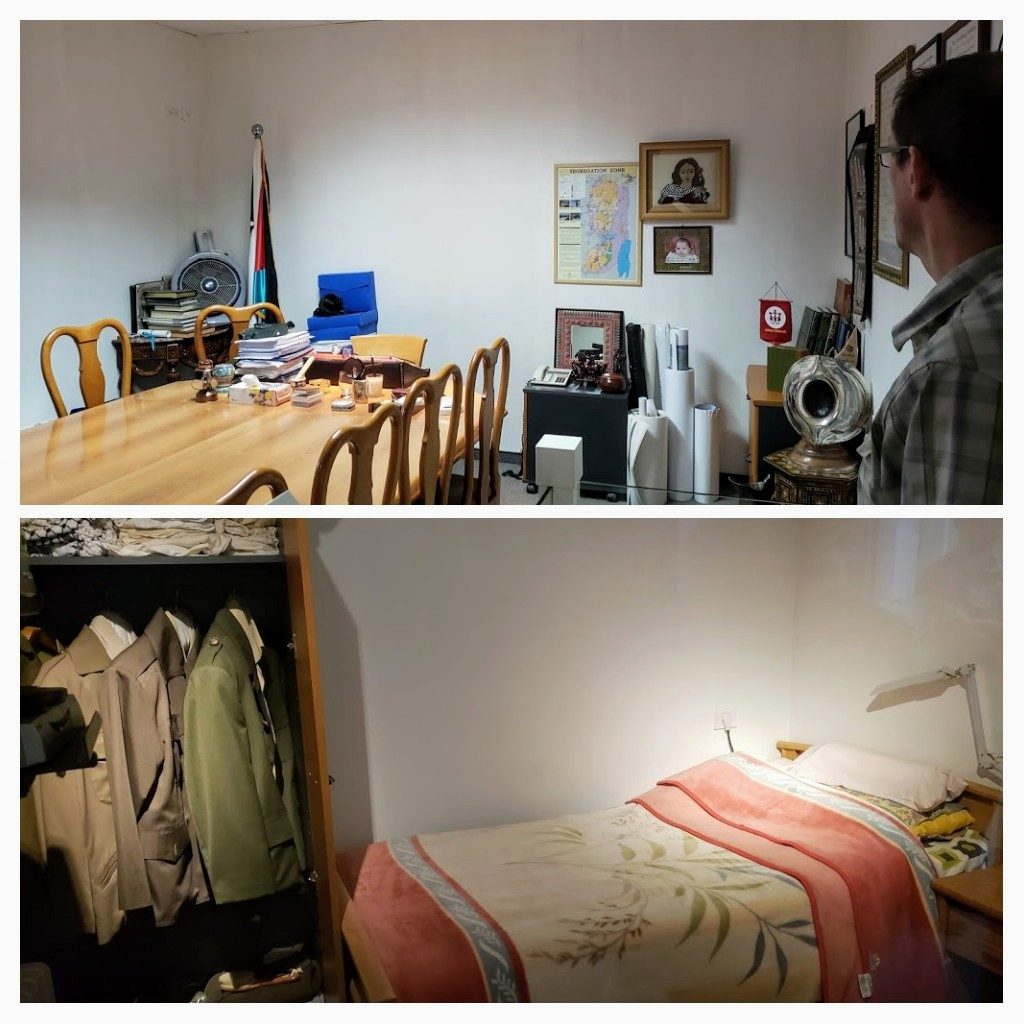
Our last stop in this complex was to see the exhibition space which at the time featured an exhibition about Palestinian women; ‘protectors of our sustenance and life and guardians of our eternal flame.’ The exhibition presents 13 female artists, 12 Palestinian and one from occupied Syrian Golan Heights. There was sculpture, photography and paintings in diverse styles.
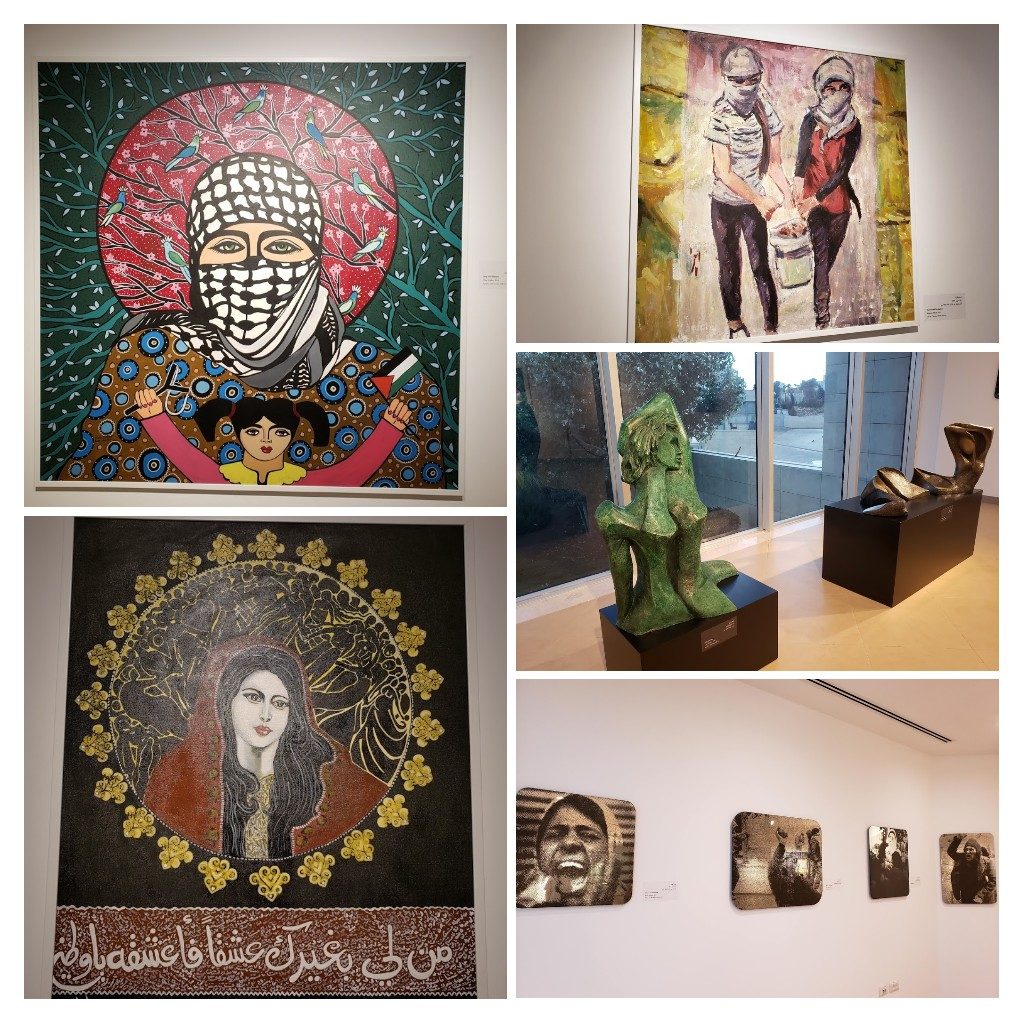
On the way to the bus stop we came across a bakery where we got the most delicious fresh pita bread we had on our trip and some really nice bread things with filling (spinach, spicy potato, cheese). SO good and so cheap compared to Israel!
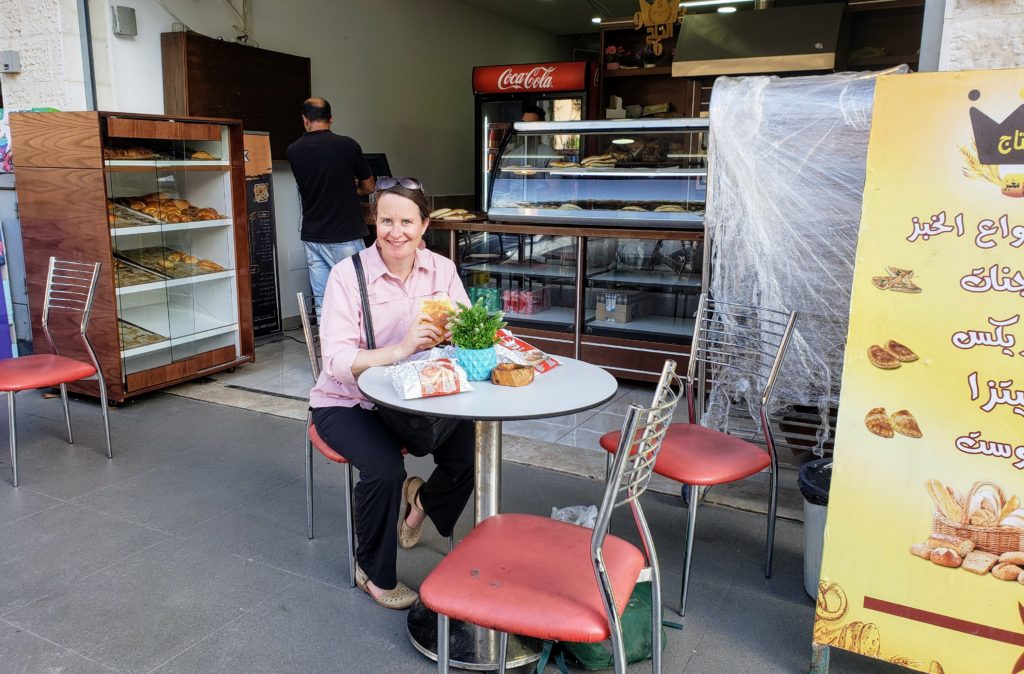
After our fill of bakery deliciousness it was back on the bus and back to Jerusalem – with a considerable delay at the border crossing, where i took this picture (from the bus) of the West Bank barrier wall, more on that in my post about Bethlehem, our other trip into Palestine.
